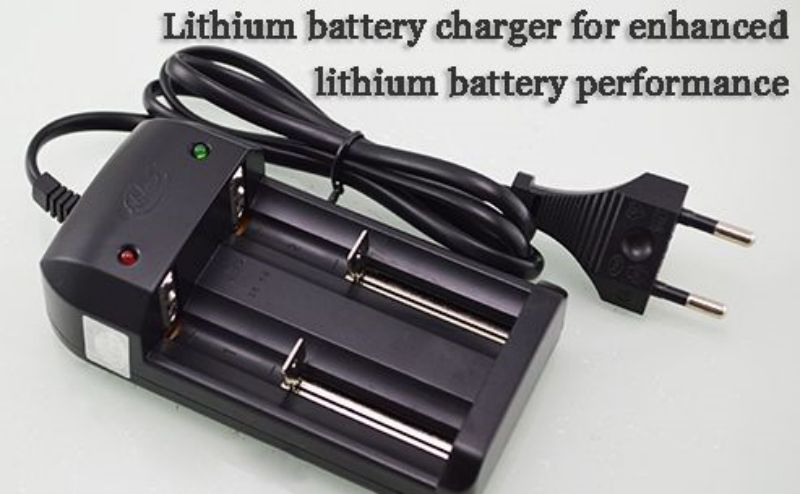
Main content:
- 1.Battery charger types
- 2.What type of charger is needed for lithium batteries?
- 3.Do lithium batteries need a special charger?
- 4.What are the characteristics of a lithium battery charger?
- 5.Lithium battery charger vs. lead-acid charger?
- 6.Battery parameters related to the battery charger
- 7.How to choose the best lithium battery charger?
- 8.What is the best way to charge a lithium battery?
- 9.Can you use a trickle charger on a lithium battery?
- 10.Is fast charger good?
- 11.Increase the longevity of the battery with a lithium battery charger
The invention of lithium-ion batteries and the lithium battery charger has accelerated the world of automation. These batteries have been using on various electronic equipment and automobile fields like motorcycle batteries. Lithium ion battery has many advantages over alkaline and acid batteries. Its energy density is very high, and also it has a meager self-discharge rate. And the lithium-ion batteries can deliver high voltage for an extended period. They have no memory effect.
The lithium battery is easy to recharge, and the lithium battery charger is available in linear and switching modes. The device allows the battery to store energy when connected to electric power. The lithium battery charger varies according to the type and size of the battery.
1.Battery charger types
There are fourteen types of battery chargers with various features available as of now. Let us check it.
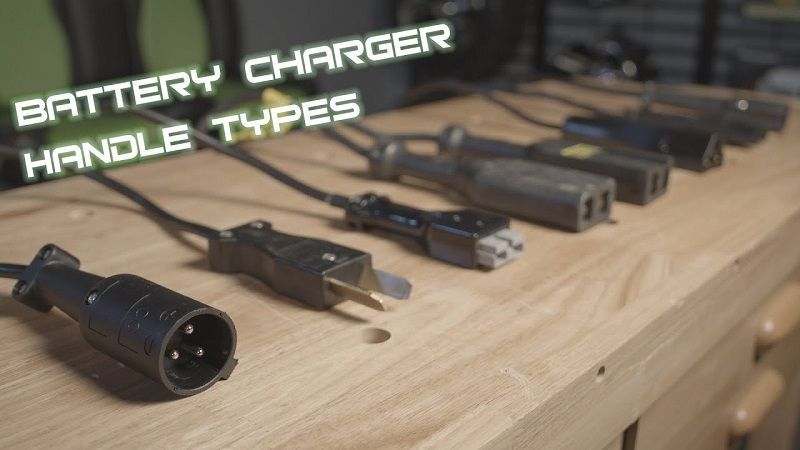
① Simple charger
The simple charger recharges the battery by supplying DC power by not changing the output, checking the battery power, or charging time requirement. It has no control features; hence, in the long run, it can damage the life of the batteries. These battery chargers are inexpensive.
② Fast charger
These chargers will have a control circuit to facilitate quick recharge. The fast chargers will come with a cooling fan to manage the temperature of the batteries within the permitted level, and damages will be very minimal.
③ Three-stage chargers
The three-stage chargers are designed to compensate for the self-discharge power loss of batteries. Its intelligent feature will control the recharging in three stages. The first stage is known as constant-current charging, and in this stage, the charger charging current remains constant, the charge power increases rapidly,and the battery voltage increases rapidly. In the second stage, which is called the constant voltage charging stage, the charging voltage of the charger remains constant, the charge quantity continues to increase, the battery voltage rises slowly, and the charging current decreases. And when the power declines, it will move to the third stage of recharging. The battery power is full, the charging current drops to below the floating charge conversion current, and the charger charging voltage is reduced to the floating charge voltage.In the floating charging stage, the charger charging voltage remains at the floating charging voltage until the charging ends. The battery power is full, the charging current drops to below the floating charge conversion current, and the charger charging voltage is reduced to the floating charge voltage.In the floating charging stage, the charger charging voltage remains at the floating charging voltage until the charging ends. This charger is a charger suitable for lithium-ion batteries.Lithium-ion batteries have to use this dedicated charger.
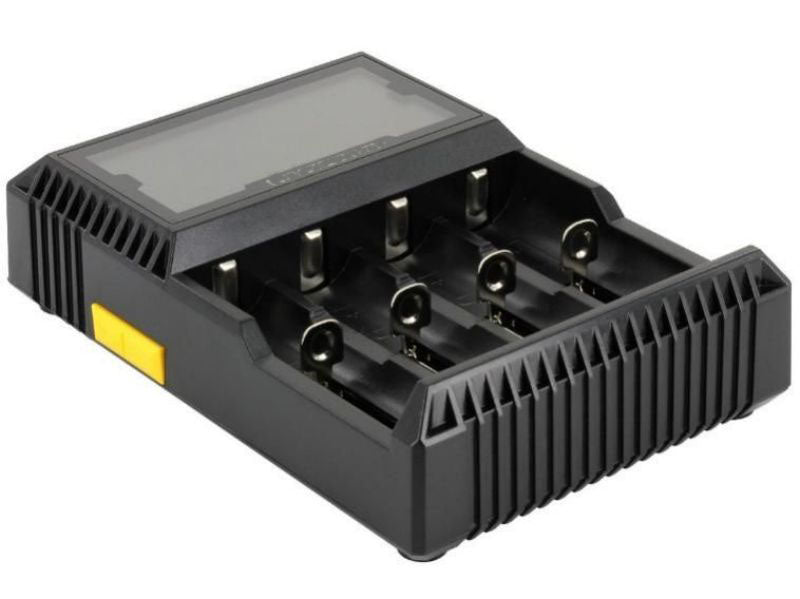
④ Induction powered charger
These chargers protect people from possible electrocution, and these chargers are commonly used in mobile phones and bathroom devices. It is a no-metal contact charger that uses electromagnetic energy with the help of inductive coupling to the equipment that needs to recharge. That is, when the power adapter and the battery are connected, the power cord is not used. Through the power adapter transmits the high frequency electromagnetic field, and the battery end converts the electromagnetic field to receive the electric energy.
⑤ Smart charger
A smart charger is a universal smart charger, and it is an ideal device for recharging a smart battery. The smart charger can give different charging modes and corresponding algorithms according to the characteristics of each battery to achieve the best charging effect. These types of chargers will calculate the various charging parameters like time required for recharging, recharging termination, voltage monitoring, etc.
⑥ Motion-powered charger
These chargers use motion changes to generate electric power and specially designed magnets to recharge the battery skillfully.
⑦ Pulse charger
The pulse charger is an electrical device that charges a rechargeable battery in a pulse manner. The technology uses high voltage electrical pulses in the battery and because of the automatic control function, it's actually hard to fully charge. The electric pulses can check the lead-sulfate crystals and extend the battery life. It is ideal for acid batteries.
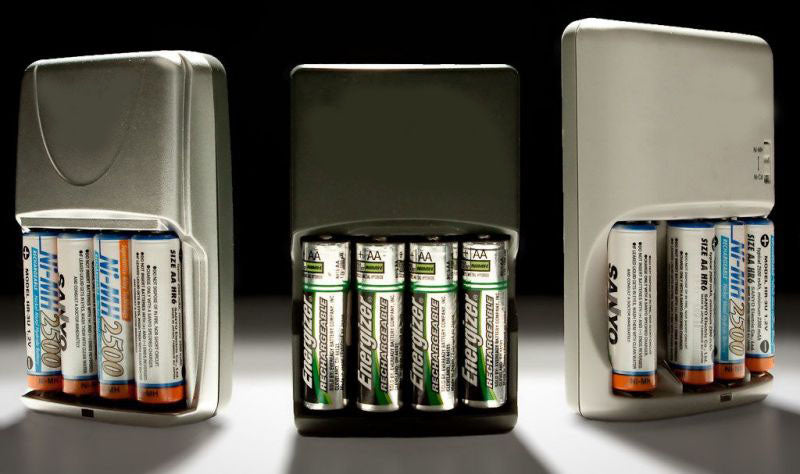
⑧ Solar charger
Solar chargers are divided into portable and non-portable, and they can transform light energy into low voltage DC.
⑨ Timer-based charger
It is an ideal charger for low and high-capacity batteries. You can set the charger's timer, and the charging output will get terminated at the pre-set time.
⑩ Trickle charger
It is a low-current charger used for batteries with a mAh of 5-1500. These chargers use to recharge batteries with a low capacity of 2-30Ah. The trickle charger recharges the battery equal to its self-discharge rate.
⑪ Universal battery charger
The universal battery chargers can charge many types of rechargeable batteries in addition to lithium batteries, mainly mobile phone batteries. But it can't adjust the current size and charging time according to the battery capacity, so it always leads to undercharging or overcharging.
⑫ USB-based charger
The USB-based charger allows you to use the USB cable for recharging the device. It is beneficial for mobile phones, laptops, tablets, and audio players.
⑬ Power bank charger
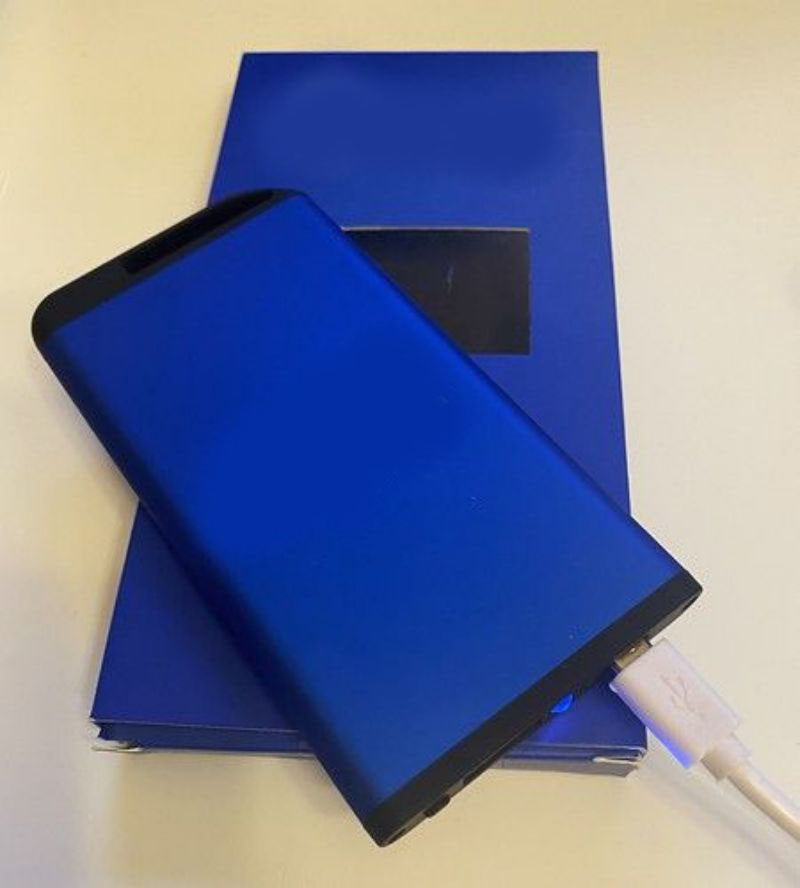
It is a portable charger with a built-in battery, and you can charge the power bank with a USB port. Power banks typically use 18650 rechargeable battery, and when your device is running short of power, you can connect it with the power bank and use it as a backup device.
⑭ Battery case charger
It is an extended battery attached to the rear side of the mobile phone like a battery case. The battery case charger is ideal for emergency usage, especially while traveling. You can use it as a mobile phone case, and when in need, you can connect your cell phone with the battery case charger with the USB cable.
2.What type of charger is needed for lithium batteries?

Lithium battery charger is specifically used to charge lithium-ion batteries. Lithium-ion batteries have high requirements for chargers and need to protect circuits, so lithium battery charger usually has high control precision and can charge the constant current and constant voltage of lithium-ion batteries, which has trickle current, constant current, and constant voltage charging stages. It will have the marking of CC/CV on the chargers.
3.Do lithium batteries need a special charger?
Lithium batteries require a matching charger and have to be designed as a protective circuit to prevent overcharging.It should be noted that the charging process of lithium-ion batteries is completely different from that of nickel-cadmium and nickel-metal hydride batteries. It is a complex electrochemical reaction process.Therefore, a special charger needs to be configured for charging.Due to the different voltage levels of lithium battery and other batteries and its very strict requirements for charging voltage tolerance (generally 1%), if you blindly charge the lithium battery with other battery chargers, it will damage the lithium battery.The quality of the lithium battery charger is crucial to the impact of the life of the lithium battery.
4.What are the characteristics of a lithium battery charger?

If the Lithium-ion batteries are charged correctly, they can offer excellent performance for an extended period. There is no universal lithium battery charger that can use for all types of lithium batteries. The chargers will differ depending on the battery type, voltage rating, battery size, battery capacity, and maximum charging current. Generally, lithium chargers will protect the battery from overcharging and save it from potential damages due to overheating. General characteristics of the lithium battery charger are over-discharge protection, reverse charge policy, over-charge protection, over-voltage protection, and managing the charge current rate.
5.Lithium battery charger vs. lead-acid charger?
Both battery chargers are unique in features to recharge the batteries for what they have been designed to accomplish the charging task.

Lithium battery charger: It has a unique circuit feature to meet the charging requirement of lithium batteries. Technically, lithium batteries demand better features, protection circuits, and battery management systems. Therefore, lithium battery chargers will have advanced features and battery management systems to deliver seamless power to charge lithium batteries with constant voltage and current. The lithium battery charger will charge the battery with a stable current until the voltage rises to 4.2v, and it will not permit to increase in the voltage. So, it will protect the battery from overcharging. The charger will calculate the current value and terminate the charging. These features are good, and you have to select the correct matching lithium battery charger.
The lead-acid battery charger: Lead-acid battery charger adopts three-stage charging, with excellent quality, good performance, high charging saturation, and it can protect from overcharging to improve the service life of the battery. It also has many safety features, including short circuits and overheating protection. The charger is designed to protect the battery with its best features, but you cannot use it for charging lithium batteries because lithium batteries need high safety features. The chargers can protect the battery from overload, automatic reverse connection, etc. It will also have the feature to increase the charging voltage by 5% while doing constant charging to check the internal resistance.
6.Battery parameters related to the battery charger
The quality of the charger directly affects the quality life of the battery. The charger acts on the battery, the maximum current, maximum voltage, conversion current and floating charge current, these several key parameters have a crucial impact on the battery. Among them, the maximum current overassembly causes the active material of the polar plate to fall off, and the maximum current is too small and the conversion current is too high will cause the battery undervoltage.Too high maximum voltage, too low conversion current and too high floating charge voltage can lead to battery deformation.If the highest voltage is too low will cause the battery undercharging, too low floating charge voltage will obviously affect the battery life. The charger and battery must have the same voltage for efficient battery charging. If you want to recharge a 12V battery, then your charger also must have 12V output.
7.How to choose the best lithium battery charger?
The purpose of the lithium battery charger is to recharge lithium batteries by passing electric power directly to it. As a result, batteries will store electric power, which the equipment can use when required. The lithium battery charger will have built-in control features and protect the battery from overcharging. So, how can you confirm whether the charger has all the essential protective features to save the battery from any form of possible damage due to an incompatible battery charger? You need to check and confirm that the charger accommodates certain vital features to prevent the lithium battery charger from any potential damage due to inferior/incompetent quality chargers.
① Check the input voltage
The input voltage rate is a critical technical feature matching the lithium battery requirement. The input voltage should be either 110 or 230V, the global standard. The input voltage should not be more than the limit of the charger. Excess input voltage than the recommended charger input may damage the charger. So, make sure the input voltage power of the lithium battery charger falls as per the requirement.
② Check the battery type
Generally, a charger cannot identify the type of battery it is being used to recharge. It would be best to use the correct charger to charge the battery for what it has been designed to operate. Using a wrong charger or charger that has not intended to use a particular type of battery can damage the battery; otherwise, you must use a charger that can use with different types of batteries. The charger's output voltage must match the battery's input voltage.
③ Confirm the charging time, charging voltage, and current specifications
The charger module should be selected as per the voltage required to get sufficient charging. Suppose the charging module comes with a design feature of 10S, then the charger output voltage should be 42v, assuming each battery is 4.2v. If it is 12S, then the output voltage must be selected to 50.4v. Selecting the proper output voltage will let you get an adequate recharge. Further, you must also check the current capacity of the charger, which will be a decisive factor in managing the charging time. For example, if you are using a 4A charger, it can recharge a 20AH battery in 5 hours. But when you can use an 8A charger, the charging time for a similar battery will be 2.5 hours.
④ Charger capability and cooling process
Presently, lithium battery charger come with natural cooling (without a fan), air cooling, and water cooling. In the natural cooling system, the accumulated dust particles will be a reason for overheating and create challenges while recharging. The lithium battery charger with an air cooling feature use the fan for effective cooling. Air cooling system chargers are very effective and minimize the operation cost, and they are easy to maintain. Water cooling enabled chargers are the most effective, and they offer noiseless operation. You can decide on the type of chargers as per the requirement.
⑤ Charge port
The lithium battery charger jack must match the device's port, otherwise, you cannot use it for recharging unless you have a compatible accessory with the charger jack.
⑥ Protection and safe mode
Safe charging and protection features are inevitable for a charger to deliver efficient charging. A good charger will also have exclusive charging features, including pre-charge mode, constant voltage (CV) mode, constant current (CC) mode, and floating charge mode. The charger must also have protection features like SCP, UVP, OVP, RPP (reverse policy protection), timing protection, battery OTP, charger OTP, and all safety and EMC regulations.
8.What is the best way to charge a lithium battery?
The best way to charge a lithium battery and receive excellent performance is control the charging current and charging voltage in chronological order, do not overcharge, otherwise it is easy to damage the battery. Lithium ion battery charging is best to slow charging way, try to prevent fast charging, repeated charging and discharge will also affect the life of polymer lithium ion battery. Keep your battery charged between 40-80% and do not charge the battery for 100% or let it drop to zero percentage.
9.Can you use a trickle charger on a lithium battery?

Trickle charging is used to compensate for the loss of capacity due to self-discharge after the battery is fully charged.Pulsed current charging is generally used to achieve this purpose, but lithium-ion batteries are self-discharging as low as just 3.5 percent a month. At present, the charger cannot control the trickle charging process of lithium battery, the trickle charging time is too long will have the risk of explosion, the trickle charging time is too short, the capacity of lithium battery is not full and shorten the lifespan of lithium battery.
10.Is fast charger good?
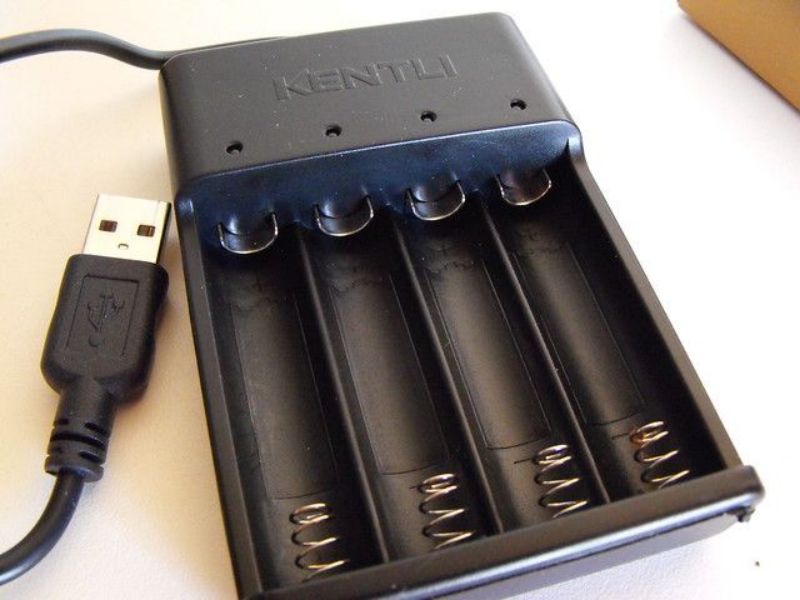
Having a fast charger is always good, especially when you need a quick recharge. However, it is worth noting that when the battery is charged and discharged, the cathode and anode of the battery will shrink and expand with the release and absorption of ions, and a long time will destroy the chemicals on the battery, resulting in shortened battery life.In addition, in the fast charging, due to the relatively high current, the thermal effect of the current will be intensified, resulting in the battery will produce high temperature, high temperature will also make the capacity sharply reduced and permanent damage to the cell phenomenon. Therefore, slow charging can give extended life for the battery than using a fast charger.
11.Increase the longevity of the battery with a lithium battery charger
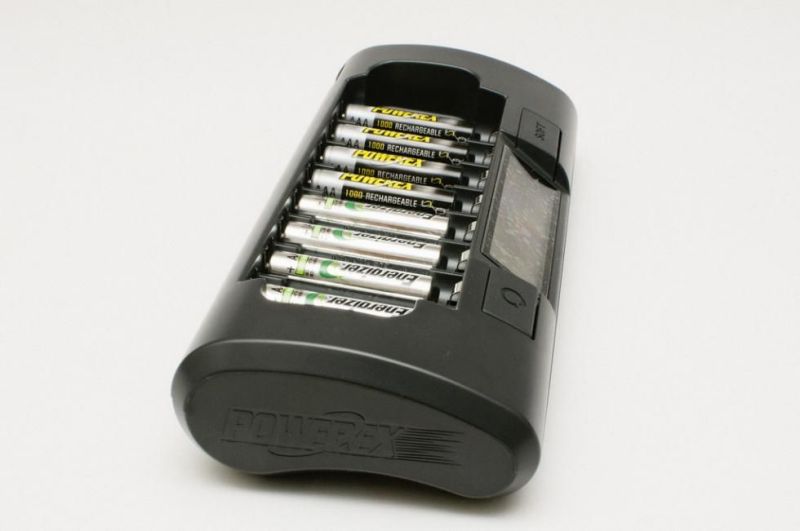
Using a lithium battery charger exclusively designed with particular voltage input and output matching to the lithium battery can increase the battery's longevity. But that is not only the parameter that governs the battery's life. Creating a compatible environment is also an important parameter to increase the battery's longevity.
The following recommendation can help to increase the longevity of a lithium battery: Maintain batteries at room temperature; Keep partial discharges/recharges between 50-80 percent; Ensure that lithium-ion batteries are not overcharge and overdischarge; Discharge the battery to 40%-60% when planning for long storage and put it in a dry and cool environment. You need to charge the battery once every 3 months, so as not to store it for too long, the battery due to self-discharge caused by low power, resulting in irreversible capacity loss.
Lithium batteries are the source of power in the future. When alkaline vs lithium batteries, li-on cells are the best option compared to alkaline/acid batteries, as they can charge must faster and deliver high power capacity for an extended period. It is eco-friendly, and it can reduce our dependence on fossil fuels. An excellent lithium battery charger can offer a hassle-free charging experience and extended life for the lithium battery.
















